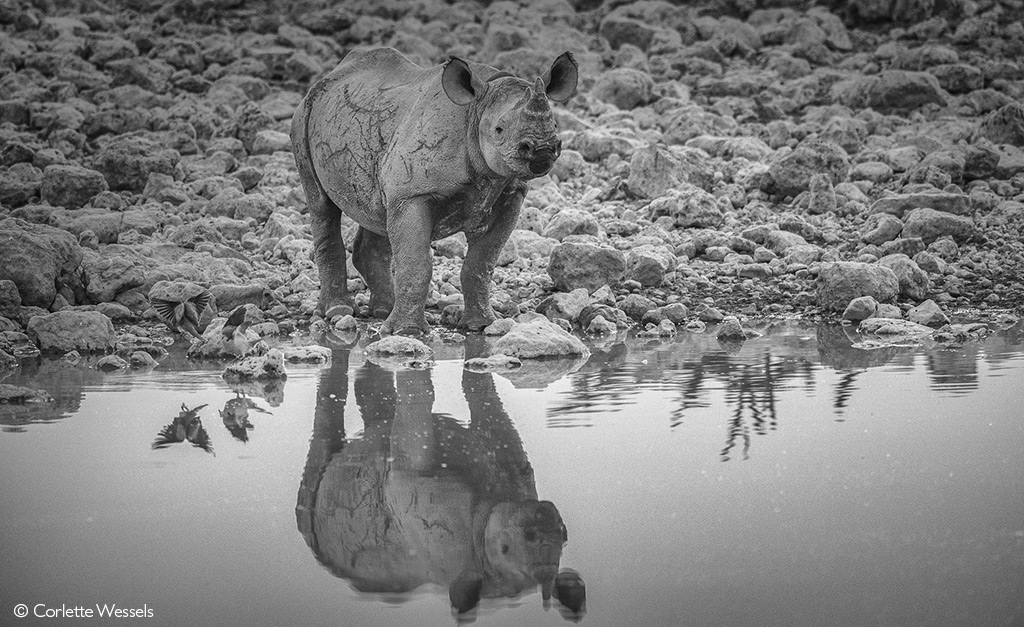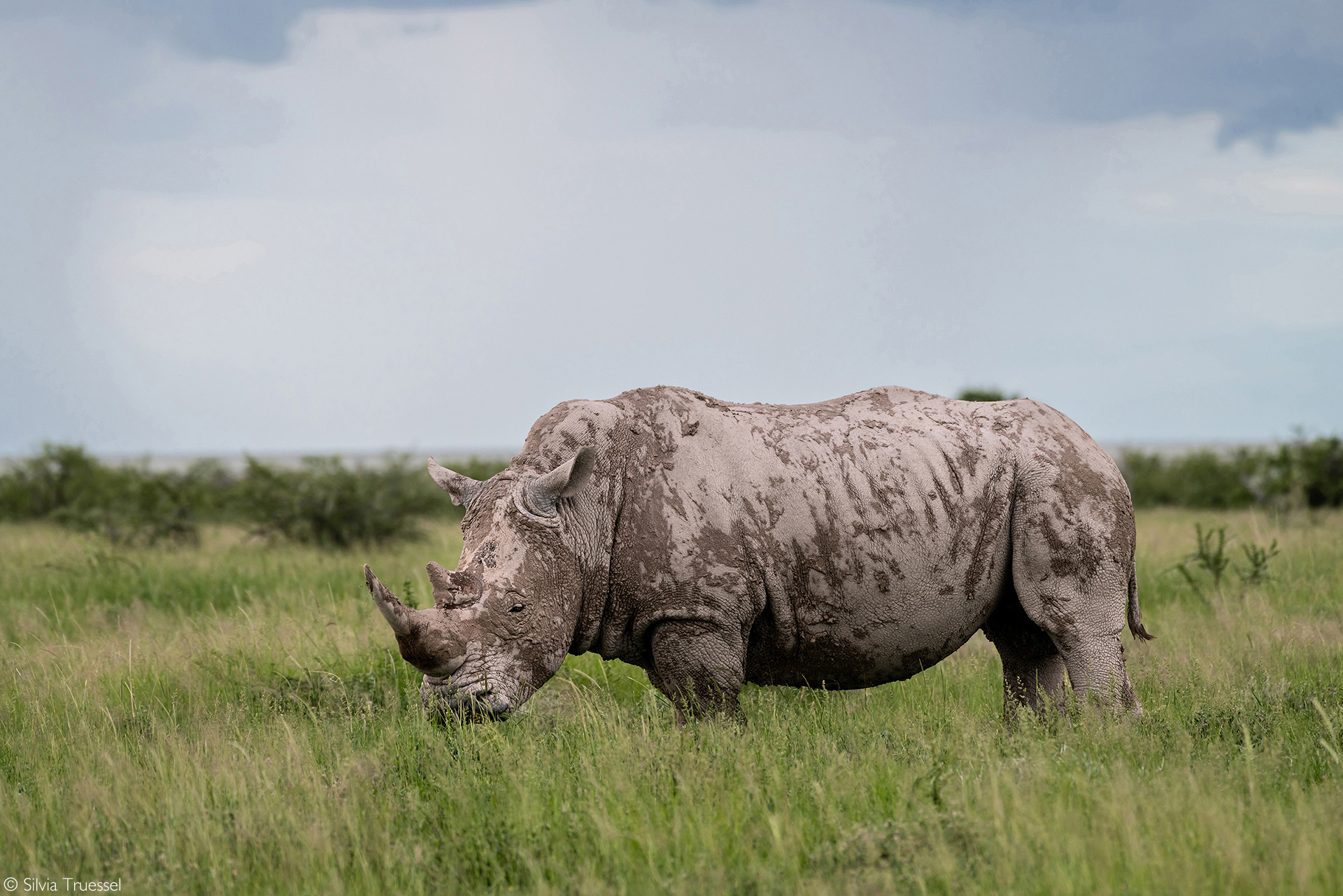
The repercussions of escalating climate for the natural world are becoming increasingly dire. While discussions often spotlight the broad implications of climate change, it is essential to zoom in on the specific vulnerabilities of Africa’s iconic megafauna, including elephants and rhinos. Unable to cope well with prolonged periods of extreme temperatures, rhinos are particularly vulnerable to the increasing temperatures associated with climate change.
Among Africa’s majestic megafauna, rhinos stand out as particularly vulnerable. While elephants can regulate their body temperature by flapping their ears, rhinos rely on alternative cooling methods, such as consuming more water, wallowing, or seeking shade. Bearing in mind that rhinos do not cope well with prolonged periods of extreme temperatures, these strategies may prove insufficient in the face of escalating temperatures, a trend predicted to continue according to climate models.
A new study sought to gain valuable insights into the future suitability of rhino habitats by integrating species-presence data with climate projections. It delineated rhino tolerance thresholds for temperature and precipitation, providing a basis for assessing habitat suitability under different climate scenarios.
Researchers, including Timothy Randhir from the Department of Environmental Conservation at the University of Massachusetts, used the Intergovernmental Panel on Climate Change’s Representative Concentration Pathways (RCPs) 4.5 and 8.5 to forecast future climate scenarios. These pathways are the standard for predicting climate change based on human actions. RCP 4.5 represents a scenario where moderate efforts are made to reduce the impacts of climate change, whereas RCP 8.5 represents a future where little effort is made to counteract the impacts of climate change.

Under the 4.5 RCP model, which predicts a moderate rise in carbon dioxide levels, global temperatures are expected to increase by an average of 2.4°C by the year 2100. On the other hand, the 8.5 RCP model predicts the worst-case scenario, where the human population continues growing, coal burning does not slow down, and greenhouse gasses do not reduce.
Over the past century, temperatures across Africa have increased by 0.5–2°C. Apart from increased mean temperatures, models have shown that the effects of climate change in Africa will lead to an increased frequency of El Niño Southern Oscillation in southern Africa, an increased frequency of severe weather anomalies, and lower mean rainfall in most areas.
What does this all mean for rhino populations in Africa’s protected areas? The study involved several protected areas across the continent, including South Africa’s Kruger National Park, Etosha National Park in Namibia, Hwange National Park in Zimbabwe, Tsavo West National Park in Kenya, and Hlane Royal National Park in Eswatini.

The study took historical baseline data from 1975 (averaged from 1961–1990), providing a reference point for the changes in temperature and precipitation expected in the study parks in the mid-and late century under the two modelled scenarios, RCPs 4.5 and 8.5. Using this model, all parks showed increasing temperatures, though this varied between parks.
The parks with the most significant temperature increases combined with decreasing rainfall are Etosha and Hwange National Parks. Etosha may even become inhabitable for rhino populations. Temperature projections by the mid-century under RCP 4.5 show increases of 2.4°C (for both Etosh and Hwange), and 5.2°C and 5.1°C respectively by the late century under RCP 8.5. Conversely, Hlane and Tsavo West National Parks show more modest rises of 1.9°C and 2 °C by mid-century under RCP 4.5, and 4.1°C and 4 °C, respectively, by the late century under the RCP 8.5 scenario. Models also show that Tsavo West will become wetter, particularly under RCP 8.5 conditions, by the late century.

Kruger National Park’s average temperature is set to rise by 2.1°C (RCP 4.5) and 4.5°C under the worst-case scenario by the mid-century, respectively. Precipitation in most of southern Africa’s parks is expected to decrease as CO2 levels rise.
The study suggests this poses a real risk to rhino populations and their habitats. It shows that rhinos might be extinct in southern Africa by 2085 if the worst-case scenario becomes a reality. There might not be any southern white rhinos left in the Kruger National Park by 2036. For the black rhino to thrive in a given habitat, the ideal mean annual temperature is between 17 and 22°C, with sufficient precipitation to ensure the growth of shrubs, grasses and other foraging materials. In addition, a 1994 study by DJ Pienaar of habitat preferences of the white rhino in Kruger National Park suggested that regions with less than 400mm of rain per year were not conducive habitats for white rhinos.
 Want to see rhinos on an African safari? We have ready-made Big-5 safaris to choose from, or start planning a unique safari made just for you.
Want to see rhinos on an African safari? We have ready-made Big-5 safaris to choose from, or start planning a unique safari made just for you.
Understanding climate change and land-use influences on biodiversity is crucial for developing effective conservation strategies. Studies like these show the importance of macroecological assessments in evaluating habitat suitability for endangered species like the black and white rhino. By analysing the impact of climate and land-use change on rhino habitats, researchers can implement adaptive management strategies tailored to future climate scenarios.
Climate change poses a formidable threat to rhino populations and their habitats, necessitating urgent action. Researchers have shed light on the complex interactions between climate change and rhino habitat suitability by leveraging climate models and spatial analyses. Targeted conservation efforts are essential to secure the future of these iconic species in the face of escalating environmental challenges.

Editorial note: It is widely known that rhinos occur in the national parks mentioned above. Information about the presence of rhinos in protected areas comes from within – staff, third-party contractors, pseudo-tourists, relevant government departments, etc. There is no way to prevent poaching syndicates from accessing this information. Successful poaching syndicates find out exactly where in the reserve the target rhino is at any specific time – so that they can get in and out quickly. None of the information in this article is news to the syndicates, and it is also not specific enough for their purposes.
Reference
Mamba, H. S., & Randhir, T. O. (2024). Exploring temperature and precipitation changes under future climate change scenarios for black and white rhinoceros populations in Southern Africa. Biodiversity, 25(1), 52–64.
To comment on this story: Login (or sign up) to our app here - it's a troll-free safe place 🙂.![]()






